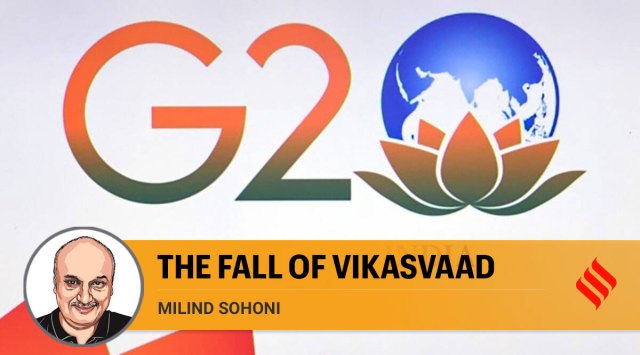
One more budget has come and gone. Yet the question remains: What is the change that will improve the lives of our ordinary people? Going by the pronouncements of our leaders, adhyatma and parampara will rejuvenate our rivers, enhance democracy and improve the status of women. Through Vasudhaiva Kutumbakam, the G20 nations too will learn about our recipe for holistic growth. Forgotten, however, is the ethos of vikasvaad of 2015.
Within the G20, we are close to the bottom of the pile. At $1,900 our per capita GDP is the lowest. The next lowest is Indonesia at $3,900. At 69 years, our life expectancy is the second lowest. More than 30 per cent of our jobs need just primary education and 70 per cent of those in the workforce have no contract — both a G20 record. Barely 35 per cent of our male population and 18 per cent of our female population attain secondary education — another G20 record. And, we have some of the most polluted rivers and cities.
This leads us to ask: Whatever happened to vikasvaad? The vikasvaad of 2015 was aimed at a reform of the top bureaucracy of the country, and a revamp of the central scientific agencies. Ultimately, for any society, it is this cadre that determines the quality of people’s lives. In India, through the IAS, IITs, IIMs and a network of central agencies, this power is concentrated in a few hundred top functionaries — the secretaries, directors of central institutions and senior scientists. They are responsible for the conduct of most state functions such as managing irrigation systems, making railway engines, running universities or regulating hospitals. The scientists and professors are responsible for the measurement, analysis and upgradation of most practices — from estimating groundwater to tackling pollution. The elite institutions, through their graduates, are to create new professionals, companies and agencies that would bring modern services to the citizens of this country.
By the 1990s, the folly of this exceptional concentration of knowledge and power was clear. A highly centralised scientific system merely ensured that the scientists were more accountable to their own internal bureaucracy of promotions and awards than to the problems which people in the regions faced. Even today, most IITs remain disconnected from the states they belong to and most professors have little understanding of regional problems — floods and droughts, pollution and its causes, small industries or failing public transport. The IIT graduate is a global brand with little training or interest in nation-building or the temperament for working on hard scientific problems.
The sheer complexity of managing a typical department of a state such as Maharashtra — let alone India — is immense. Managing transport, for example, requires a cadre of committed officers at all levels. The social value accounting of the public bus system, its logistics and current practices need careful documentation and analysis. They need to change with the times. The IAS cadre — their training and work culture — puts paid to such a systematic approach. The overlordship of the IAS over the state cadre and absence of collaboration with higher education institutions does not permit any delegation and consultation within the senior management.
The results are for all to see — most departments in several states, including Maharashtra, now fail to deliver even the most rudimentary services in a timely manner. This has created a rentier system of local politicians and contractors — from the informal wiremen and land surveyors to private buses and tanker lobbies — who now provide the missing service.
It was this system that was to be dismantled through the vikasvaad of 2015. Indeed, the directors of the IITs were hauled up before the President of India and told a few things about the utility of science. The IAS officers were told to go back to the place of their first posting and see for themselves what had changed and what had not. Lateral entry was mooted. But the process stopped abruptly, and here we are now, firmly in the throes of parampara and adhyatma. Why has this happened?
The first reason is that dismantling the elite knowledge and power structure would cause a rebalance that would diminish the power of Delhi. It would lead to a decentralisation of the agenda of development and the re-emergence of India as a Union of states — the original intent of our Constitution makers. And this would strengthen a diverse civil society, enhance awareness and free thinking on issues of education, health and culture. That is anathema to some national parties.
But more importantly such a rebalancing would also lead to a multi-polar common market, as in Europe. The regional economy of the southern states, their knowledge cities, expanding cultural influence, intellectual ties across the world, and a significantly better system of citizenship and governance already offer an alternative developmental ecosystem. That would pose a serious challenge to the primacy of a single metropolitan “national” economy and its class structure and a “national” discourse operated from the North.
What we are now witnessing may well be a repeat of the historical expansion of the rule of Delhi, financed by merchants of the North, for economic control of the Deccan and the lands south of the Narmada. The appeal to the parampara of an old rashtra and the unity of Kashi-Rameswaram is the window dressing of a bitter campaign to enforce a single market and create a highly centralised, unequal and unjust, but unipolar India.
The writer is Professor, IIT Bombay